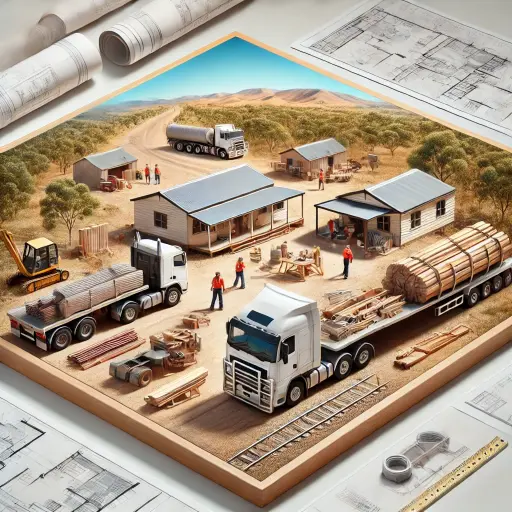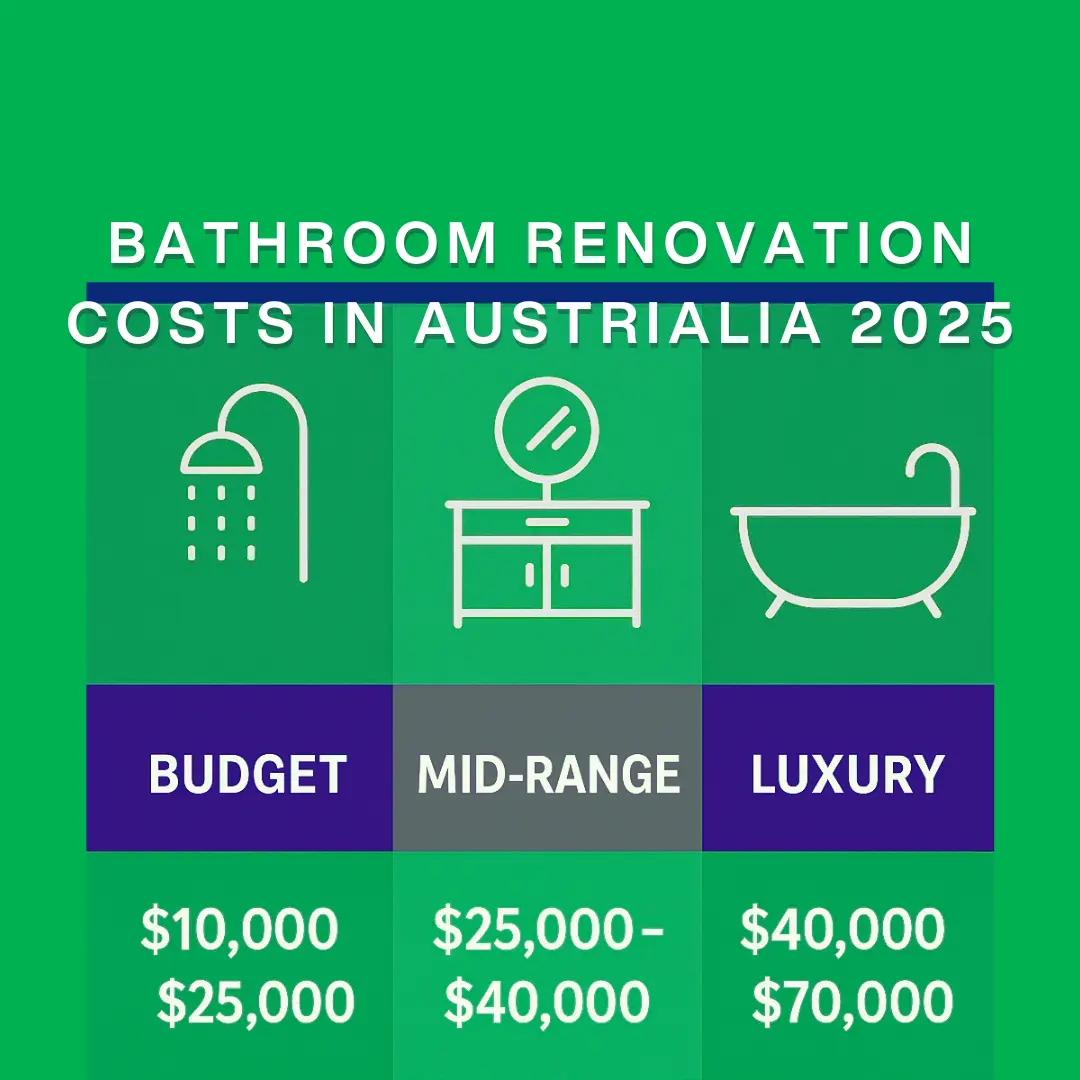Rural and regional construction projects in Australia present unique challenges that demand specialized approaches to cost estimating. Unlike urban centers, these areas often face limited access to materials, higher transportation expenses, labour shortages, and environmental constraints. Builders must navigate these obstacles to create accurate estimates that ensure project success and profitability.
Effective rural and regional construction estimating in Australia involves accounting for logistical complexities, sourcing skilled labour, and planning for climatic variations. By adopting tailored strategies, builders can overcome these hurdles and deliver projects that meet client expectations while staying on budget.
This guide explores the key challenges builders encounter in rural and regional areas and provides actionable strategies for crafting reliable estimates tailored to these unique environments.
Transport and Material Costs in Regional Construction Estimating
Transport and material costs are among the most significant challenges faced in rural and regional construction estimating in Australia. The geographical remoteness of many rural areas impacts the availability, cost, and logistics of delivering essential materials to construction sites.
1. Limited Supplier Options in Rural Construction
Unlike urban centers, rural and regional areas have fewer local suppliers. Builders often need to source materials from larger cities or specialized suppliers located far from the project site.
- Impact on Costs: Limited competition among suppliers can result in higher prices for materials.
- Logistical Challenges: Securing materials in a timely manner can require extensive coordination, leading to delays and additional costs.
Example:
A builder in Western Australia had to transport prefabricated steel beams from Perth to a remote site, incurring transportation fees that increased the project cost by 15%.
2. Increased Transportation Expenses for Regional Projects
Transporting materials to rural areas involves longer distances, higher fuel costs, and potential delays caused by poor road infrastructure or adverse weather conditions.
- Freight Costs: Builders must include freight fees in their estimates, which can vary significantly depending on the material type and distance.
- On-Site Storage: In remote areas, materials often need to be delivered in bulk and stored on-site, increasing costs for secure storage facilities.
Example:
Delivering concrete to a regional project in Northern Queensland required a refrigerated truck to prevent premature setting due to heat, adding unexpected logistics expenses.
3. Challenges with Delivery Scheduling
Coordinating material deliveries in rural areas requires meticulous planning to avoid project delays:
- Bulk Ordering: To minimize transportation costs, builders often order materials in bulk, which necessitates proper on-site storage and security.
- Supplier Reliability: Limited supplier availability can lead to inconsistent delivery schedules, impacting project timelines.
Tip:
Engage suppliers with experience in servicing rural areas to improve reliability and ensure materials arrive on time.
By addressing transport and material costs early in the estimating process, builders can develop more accurate budgets and minimize risks associated with rural construction logistics. This foundation is essential for the success of any project in Australia’s remote regions.
Labour Availability and Costs in Regional Construction Estimating
Labour shortages and high costs are significant obstacles in rural and regional construction estimating in Australia. Unlike urban areas, where skilled labour is more readily available, rural projects often require innovative solutions to recruit, train, and retain workers.
1. Limited Local Workforce
Rural areas often lack a sufficient pool of skilled labour, forcing builders to bring in workers from urban centers or neighboring regions.
- Higher Recruitment Costs: Builders must cover travel, accommodation, and living expenses for workers brought in from outside the region.
- Scarcity of Specialists: Specialized roles, such as electricians or structural engineers, are particularly hard to fill in remote areas.
Example:
A builder in Central Australia had to fly in welders from Perth, incurring additional costs for airfare, meals, and on-site housing.
2. Managing Premium Wages for Remote Projects
To incentivize workers to take on rural projects, builders often offer higher wages than they would in urban areas.
- Impact on Budget: Premium wages can increase labour costs by 20–30% compared to city projects.
- Overtime Payments: Limited local labour availability may require existing workers to take on extended hours, further increasing costs.
Tip:
Include these additional labour costs in your estimates to avoid mid-project budget adjustments.
3. Productivity Challenges
Workers brought in from urban areas may require time to acclimate to the rural environment, leading to initial drops in productivity.
- Adapting to Conditions: Harsh climates or lack of infrastructure can slow down work and affect efficiency.
- Limited Workforce Experience: Local workers may lack experience with large-scale or specialized projects, requiring additional training or supervision.
Example:
A regional project in Queensland faced delays when local labourers required training to use advanced equipment, adding weeks to the timeline and increasing costs.
4. Solutions for Labour Challenges in Regional Construction
- Partner with Local Contractors:
- Engage local subcontractors who are already familiar with the area and conditions.
- Reduces costs associated with travel and accommodation.
- Upskill Local Workers:
- Offer training programs to develop specialized skills among local labourers.
- Builds a sustainable workforce for future projects.
- Accommodate Workers Strategically:
- Use cost-effective accommodation solutions, such as modular housing or shared facilities, to reduce expenses.
Example:
A builder in Northern Territory partnered with a local trade school to train apprentices, filling labour gaps while building goodwill in the community.
By proactively addressing labour availability and costs, builders can mitigate risks and create realistic estimates for rural and regional construction projects. These strategies ensure smoother operations and better budget management, even in remote areas.
Environmental and Climatic Challenges in Regional Construction Estimating
Environmental factors and extreme weather conditions are critical considerations in rural and regional construction estimating in Australia. The vast geographical diversity of Australia means builders must adapt to challenges unique to each region, from arid deserts to tropical rainforests.
1. Weather-Related Delays Impacting Regional Estimates
Rural construction projects are often subject to unpredictable weather patterns that can disrupt timelines:
- Heavy Rainfall and Flooding: Tropical regions, such as Northern Queensland, experience seasonal rains that can halt construction and damage materials.
- Extreme Heat: Arid areas like Central Australia require adjustments in work hours to prevent heat-related health risks for workers.
- Cyclones and Storms: Coastal regions in Northern Australia face severe storms that necessitate reinforced designs and materials.
Example:
A remote project in Northern Queensland experienced a month-long delay due to heavy rain during the wet season, increasing labour and equipment rental costs.
2. Specialized Material Requirements
The environment often dictates the type of materials required for construction:
- Weather-Resistant Materials: Builders must use materials like treated timber, reinforced concrete, or corrosion-resistant steel to withstand harsh conditions.
- Insulation and Ventilation: Extreme climates may require additional insulation or advanced ventilation systems to meet safety and comfort standards.
Impact on Costs:
Using specialized materials increases procurement expenses, which must be accounted for in estimates.
3. Infrastructure Limitations
Many rural areas lack the infrastructure necessary to support large-scale construction projects:
- Access Roads: Remote sites may require the development of temporary or permanent access roads, adding to project costs.
- Utilities: Limited access to electricity, water, and internet services can slow down operations and increase setup expenses.
Example:
A construction company in Western Australia incurred additional costs for installing temporary power generators at a remote mining project.
4. Solutions for Environmental Challenges in Regional Estimating
- Plan Around Seasonal Weather:
- Schedule construction activities during dry or cooler seasons to minimize weather disruptions.
- Use historical weather data to anticipate potential delays.
- Choose Climate-Appropriate Materials:
- Opt for durable materials that can withstand specific regional challenges, such as high humidity or extreme temperatures.
- Factor Infrastructure Development into Estimates:
- Include the cost of temporary utilities, such as portable water tanks or generators, in your project budget.
Tip:
Allocate contingency funds specifically for environmental challenges, typically 5–10% of the total project cost.
5. The Long-Term Impact of Environmental Planning
By addressing environmental and climatic challenges during the estimating phase, builders can ensure projects are designed for durability and sustainability. Accurate planning reduces the risk of delays and rework, leading to better client satisfaction and long-term savings.
Strategies for Accurate Estimating in Rural and Regional Areas
Creating accurate estimates for rural and regional construction projects in Australia requires tailored strategies that address the unique challenges of these areas. From accounting for transportation and labour costs to adapting to environmental factors, these approaches can help builders deliver successful and cost-effective projects.
1. Plan for Transport and Logistics
Transportation and logistics are major cost drivers in rural construction. Proper planning can help minimize these expenses:
- Include Freight Costs: Ensure estimates factor in fuel prices, delivery fees, and additional costs for specialized transport like refrigerated trucks for concrete.
- Bulk Ordering: Reduce transport frequency by ordering materials in bulk, balancing savings with the need for on-site storage.
- Reliable Suppliers: Partner with suppliers experienced in servicing rural areas to improve delivery schedules and pricing.
Example:
A builder in Northern Queensland saved 15% on logistics by consolidating material shipments and coordinating with local suppliers.
2. Build Local Workforce Partnerships
Labour shortages are a recurring challenge in rural areas, but working with local communities can alleviate some of the strain:
- Partner with Regional Contractors: Collaborate with local subcontractors who understand the region’s challenges and have existing infrastructure.
- Upskill Local Labour: Offer training programs to equip local workers with the necessary skills, reducing dependence on external specialists.
- Temporary Housing Solutions: Provide cost-effective accommodations, such as modular housing, to attract workers from neighboring regions.
For strategies tailored to urban projects, check out our article on Estimating Costs in Sydney.
3. Use Climate-Appropriate Materials and Techniques
Selecting materials and construction techniques that suit the environment can improve durability and reduce long-term costs:
- Weather-Resistant Materials: Use treated timber, corrosion-resistant metals, and reinforced concrete for regions prone to extreme weather.
- Advanced Ventilation and Insulation: Invest in systems that improve energy efficiency in harsh climates.
Example:
A rural housing project in Central Australia reduced future maintenance costs by installing heat-reflective roofs and thermal insulation.
4. Incorporate Contingency Funds
Every rural and regional estimate should include a contingency fund to account for unforeseen challenges, such as:
- Material price surges due to supply chain disruptions.
- Delays caused by extreme weather conditions.
- Unexpected infrastructure needs, like road repairs or temporary utilities.
Best Practice:
Allocate 5–10% of the total project cost as a contingency fund and adjust based on project complexity and location.
5. Schedule Construction Around Seasonal Patterns
Understanding the seasonal weather patterns in rural areas can prevent costly delays:
- Dry Seasons: Schedule activities like foundation laying and material deliveries during dry months.
- Wet Seasons: Plan indoor or preparatory tasks during the rainy season to maximize productivity.
Example:
A builder in Northern Territory avoided project downtime by planning all earthworks during the region’s dry season.
Why These Strategies Matter
Accurate estimates tailored to the unique needs of rural and regional projects not only ensure smoother operations but also strengthen trust with clients. Builders who adopt these strategies can better navigate logistical, labour, and environmental challenges, ultimately delivering high-quality projects on time and within budget.
Conclusion
Rural and regional construction estimating in Australia is a complex process that requires builders to adapt their practices to the unique challenges of these areas. From higher transportation costs to labour shortages and environmental constraints, every project demands careful planning and precise budgeting.
By addressing transport logistics, building local partnerships, selecting climate-appropriate materials, and incorporating contingency funds, builders can create accurate estimates that account for the realities of rural construction. These strategies not only improve project execution but also help maintain client trust and satisfaction, ensuring long-term success in the industry.
Accurate estimates are the cornerstone of successful construction projects, especially in rural and regional areas. If you’re looking for expert support to navigate these challenges, Matrix Estimating offers professional estimating services tailored to Australia’s diverse construction landscape.
For a broader understanding of construction estimating nationwide, visit our guide to Construction Estimating in Australia.
Contact us today to learn how we can help optimize your project planning and ensure cost-effective delivery in any location.













